290. The Explorers
climbed up to the top of Rano Kau (alternatively
named Rano Kao) in order to begin
there (E:17-18):
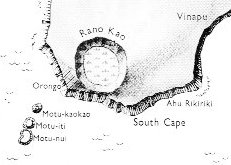
|
kai viri kai viri.ko raua ana a
totoru. |
Unforgotten are they, these
three. |
|
peira tokoa te kainga e moe mai
era |
And therefore this is the
(right) land lying there; |
|
ko te pito o te kainga i nape ai
e toona kuhane. |
this is Te Pito O Te Kainga,
which also received its name
from the dream soul. |
|
hokoou.he rarama he oho te vaka
he vari ki hanga.te pau
|
The canoe continued its
exploration and in a sweep
sailed on to Hanga Te Pau.
|
|
he tomo ki uta.he too |
They went ashore and took |
|
i
te kai ki uta. |
the food with them. |
|
hee totoi i te vaka ki uta he
hakarere. |
They pulled the canoe onto the
beach and left it there.
|
|
he noho a ira anake. |
Ira
sat down with all the other
(companions) |
|
he ki a Ira.ka ki era kia Makoi. |
and spoke to Makoi: |
|
maau e tuki e haite te kainga. |
'You shall mark the land for me
and make it known (by its
name)!' |
|
he ki hokoou a Ira.ka ki era. |
After that, Ira spoke
these words: |
|
kokoko e Nguukuu e. |
'This is the digging stick (?
ko koko), Kuukuu. |
|
maau e keukeu e oka te uhi. |
You shall work the land for me
and plant the yam roots!' |
|
he
nape mai a Makoi.i te ingoa. ko
hanga te pau ko te tomonga o
Ira. |
Makoi
named the place Hanga Te Pau,
'the landing site of Ira'. |
|
he
aringa.ko mua a hanga te pau. |
So that they would remember (?
he
aringa, literally, 'as
face'), the open side of
Hanga Te Pau |
|
i
nape ai te ingoa. |
was given this name. |
|
he ea.a Ira.he iri he oho ki
runga anake. |
Ira
got up. They all climbed to the
top of the hill. |
|
i te angahuru o te ra o te maro
i iri ai. |
They climbed up on the tenth day
of the month of June 'Maro'. |
|
MAY 8 |
9 (129) |
10 (*50) |
11 |
12 |
13 |
 |
 |
 |
 |
 |
 |
|
Ga2-18 |
(50)
Ga2-19 |
Ga2-20 (50) |
Ga2-21 |
Ga2-22 |
Ga2-23 |
|
Eskimo Nebula =
NGC2392 Gemini
(112.2)
ANTARES (α
Scorpii)
|
Al Dhirā'-5
(The Forearm)/
Punarvasu-7
(Doublegood
Pair) /
Mash-mashu-Mahrū-10
(Western One of
the Twins)
CASTOR
= α Gemini
(113.4) |
ANA-TAHUA-VAHINE-O-TOA-TE-MANAVA-7
(Pillar for
elocution)
υ Gemini
(114.0),
MARKAB PUPPIS =
κ Puppis
(114.7), ο
Gemini (114.8),
PROCYON = α
Canis Minoris
(114.9) |
α Monocerotis
(115.4), σ
Gemini (115.7) |
Mash-mashu-arkū-11
(Eastern One of
the Twins)
κ Gemini
(116.1),
POLLUX
= β Gemini
(116.2), π
Gemini (116.9) |
AZMIDISKE = ξ
Puppis
(117.4) |
|
July 11 |
12 (193) |
13 (*114) |
14 |
15 |
16 |
|
°July 7 |
8 |
9 |
10 |
11 (*112) |
12 (193) |
|
'June 14 |
15 |
16 |
17 (168) |
18 |
19 (*90) |
|
"May 31 |
"June 1
(*72) |
Te
Maro 1 (*72)
Nga Kope Ririva
Tutuu Vai A Te
Taanga |
3 (154) |
4 |
5 |
|
CLOSE TO THE FULL MOON: |
|
NOV 7 |
8 |
9 |
10 (314) |
11 |
12 (*236) |
|
ν Aquilae (Ant.)
(295.0),
ALBIREO
(Ab Ireo) = β
Cygni
(295.5) |
ALSAFI
(Fire Tripod) = σ
Draconis
(296.0), μ
Aquilae (296.3),
ι Aquilae (Ant.)
(296.8),
κ Aquilae (Ant.)
(296.9) |
ε Sagittae
(297.1), σ
Aquilae (Ant.)
(297.4),
SHAM
(Arrow)
= α Sagittae
(297.8) |
β Sagittae
(298.0), χ
Aquilae (298.3),
ψ Aquilae
(298.8) |
υ Aquilae
(299.1),
TARAZED
(Starstriking
Falcon) = γ
Aquilae
(299.3), δ
Sagittae
(299.6), π
Aquilae (299.9) |
Sravana-23
(-)
TYL = ε Draconis
(300.0), ζ
Sagittae
(300.1),
ALTAIR
(Flying Eagle)
= α Aquilae
(300.3), ο
Aquilae (300.5),
BEZEK = η
Aquilae (Ant.)
(300.8) |
|
Jan 10 |
11 |
12 |
13 (378) |
14 |
15 (*300) |
|
°Jan 6 |
7 (372) |
8 |
9 |
10 (*295) |
11 |
|
'Dec 14 |
15 |
16 (350) |
17 |
18 |
19 (*273) |
|
"Nov 30 |
"Dec 1 |
2 (336) |
3 |
4 |
5 (*259) |
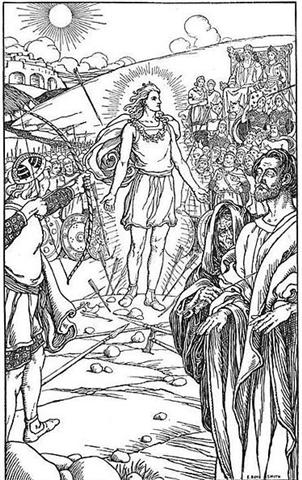
|
MAY 14 |
15 |
16 (136) |
17 |
18 (*58) |
19 |
 |
 |
 |
 |
 |
 |
|
Ga2-24 |
Ga2-25 |
Ga2-26 |
Ga2-27 → π |
Ga2-28 (58) |
Ga2-29 |
|
φ Gemini
(118.4) |
DRUS = χ Carinae
(119.9) |
ω Cancri (120.2) |
8h (121.7)
χ Gemini
(121.0),
NAOS
= ζ Puppis
(121.3) |
ρ
Puppis (122.0),
HEAP OF FUEL = μ Cancri
(122.1), ζ Monocerotis (122.3), ψ Cancri (122.6),
REGOR = γ Velorum
(122.7) |
TEGMINE
= ζ Cancri
(123.3) |
|
July 17 |
18 |
19 (200) |
20 (*121) |
21 |
22 / 7 |
|
°July 13 |
14 |
15 (196) |
16 |
17 (*118) |
18 |
|
'June 20 |
SOLSTICE |
22 (173) |
23 |
ST JOHN'S DAY |
25 (*96) |
|
"June 6 |
7 |
8 |
9 (160) |
10 (*81) |
Te Maro 10
Hanga Te Pau (*81) |
|
... Midsummer is the
flowering season of the oak, which is the tree of endurance and triumph,
and like the ash is said to 'court the lightning flash'. Its roots are
believed to extend as deep underground as its branches rise in the air -
Virgil mentions this - which makes it emblematic of a god whose law runs
both in Heaven and in the Underworld ... The month, which takes its name
from Juppiter the oak-god, begins on June 10th and ends of July 7th.
Midway comes St. John's Day, June 24th, the day on which the oak-king
was sacrificially burned alive. The Celtic year was divided into two
halves with the second half beginning in July, apparently after a
seven-day wake, or funeral feast, in the oak-king's honour ... |
|
CLOSE TO THE FULL MOON: |
|
NOV 13 |
14 |
15 |
16 (*240) |
17 |
18 (322) |
| ι
Sagittarii (301.2), TEREBELLUM = ω Sagittarii, ξ Aquilae
(301.3), ALSHAIN = β
Aquilae (301.6), φ Aquilae
(301.8) |
ε Pavonis,
θ Sagittarii (302.3), γ Sagittae (302.5), μ Pavonis (302.7) |
τ Aquilae (303.8) |
20h (304.4)
η Sagittae (304.2), δ Pavonis (304.4) |
SHANG WEI (Higher Guard) = κ
Cephei (305.2), θ Sagittae
(305.4), TSEEN FOO
(Heavenly
Raft) = θ Aquilae (Ant.)
(305.6), ξ Capricorni (305.8) |
TSO KE (Left Flag) = ρ
Aquilae (306.3) |
|
Jan 16 |
17 |
18 (383) |
19 |
20 |
21 |
|
°Jan 12 |
13 (378) |
14 |
15 (*300) |
16 |
17 |
|
'Dec 20 (354) |
SOLSTICE |
22 |
23 |
CHRISTMAS EVE |
25 (*279) |
|
"Dec 6 (340)
|
7 |
8 |
9 (7 * 7 * 7) |
10 (*264) |
11 |
|
MAY 20 (140) |
21 |
22 |
23 (*63) |
24 (144 = 12 * 12) |
 |
 |
 |
 |
 |
|
Ga3-1 |
Ga3-2 |
Ga3-3 |
Ga3-4 (63) |
Ga3-5 |
|
AL TARF (The End) = β Cancri
(124.3)
RAS ALGETHI (α Herculis)
|
χ Cancri (125.2),
BRIGHT FIRE = λ Cancri
(125.4) |
AVIOR = ε Carinae
(126.4), φ Cancri (126.8) |
ο Ursae Majoris (127.4) |
Pushya-8 (Nourisher)
υ Cancri (128.1),
θ CANCRI
(128.2) |
|
July 23 (204) |
24 (*125) |
25 |
26 |
27 (208) |
|
°July 19 (200) |
20 (*121) |
21 |
22 / 7 |
23 (204) |
|
26 (177 = 6 * 29½) |
'June 27 |
28 |
29 (*100) |
Sirius |
|
"June 12 |
13 (*84) |
14 (165 + 365)
Te Pu Mahore (*84) |
Te Maro 15 (18 * 29½)
Te Poko Uri |
16
Te Manavai |
|
Makoi got up and
began to familiarize himself
with the (new) land. (This
took place) on the fifteenth
day of the month of June ('Maro').
He went toward the sheer
face of the rocks (titi o
te opata), was
astonished (aaa),
came up to the middle (of
the outer rim of the
crater), and stood at the
very edge.
He looked down and saw the 'Pu
Mahore of Hau
Maka' (on the coast)
and said, 'There it is, the
hole of the mahore
fish of Hau Maka!'
If the 15th
day of Te Maro
corresponded to "June 14 it
could easily be explained by
assuming a day zero was also
counted.
He turned his face and
looked toward the back
(i.e., in the direction of
the crater). No sooner had
he seen how the dark abyss
opened up (below him), when
a fragrant breeze came
drifting by. Again Makoi
said, 'This is the dark
abyss of Hau Maka'.
He turned around, walked on
in utter amazement, and
arrived at the house. He
spoke to Ira, 'Hey
you, my friends! How
forgetful we (truly) are.
This place is adequate (?
tau or 'beautiful'), the
dark abyss lies there
peacefully!'
Ira
replied, 'And what should
that remind us of up here?'
All arose and climbed up.
They went on and arrived;
they all had a good look (at
the inside of the crater).
They returned home and sat
down. Night fell, and they
went to sleep.
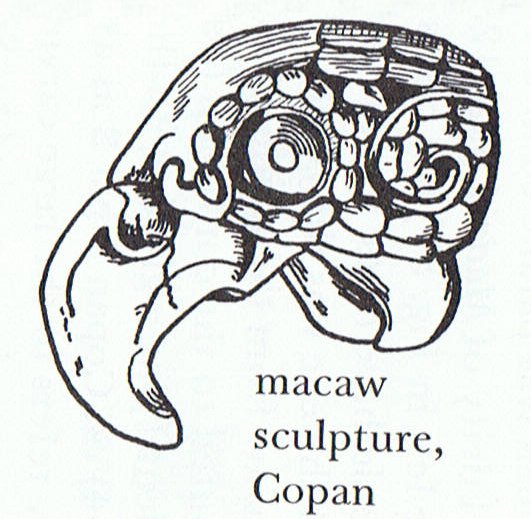 |
|
CLOSE TO THE FULL MOON: |
|
NOV 19 |
20 |
21 (325) |
23 (*246 = 6 * 41) |
23 |
|
GREDI = α Capricorni
(307.2), σ Capricorni
(307.5),
ALSHAT (The Sheep) = ν
Capricorni
(307.9) |
Al Sa’d al Dhabih-20
(Lucky One of the
Slaughterers) /
Ox / Herd Boy-9
(Buffalo)
DABIH = β Capricorni
(308.0), κ Sagittarii
(308.1),
SADIR (Hen's Breast) = γ
Cygni (308.4),
PEACOCK = α Pavonis
(308.7) |
KHUFU
MINTAKA (δ Orionis)
OKUL = π Capricorni
(309.6),
BOS = ρ Capricorni
(309.9)
ARNEB (α Leporis)
|
KHAFRE
ALNILAM (ε Orionis)
ο Capricorni (310.2), θ
Cephei (310.5)
HEKA (λ Orionis)
|
MENKAURE
ALNILAK (ζ Orionis)
ROTTEN MELON = ε Delphini,
φ Pavonis (311.2), η
Delphini (311.4), ζ
Delphini, ρ Pavonis (311.7)
PHAKT (α Columbae)
|
|
Jan 22 |
23 |
24 (*309) |
25 (390) |
26 |
|
°Jan 18 (384) |
19 |
20 |
21 (*306) |
22 |
|
'Dec 26 (360) |
27 |
28 |
29 |
30 (*284) |
|
"Dec 12 |
13 |
14 (348) |
15 |
16 (*270) |
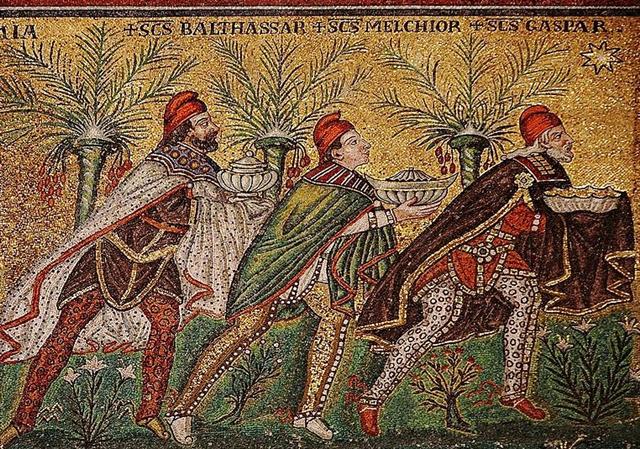 |
|
MAY 25 (5-25) |
26 (*266) |
27 |
28 (348) |
 |
 |
 |
 |
|
Ga3-6 |
Ga3-7 |
Ga3-8 |
Ga3-9 (68) |
|
Āshleshā-9 (Embrace) /
Willow-24 (Stag)
π¹ Ursa Majoris,
δ Hydrae (129.6),
AL MINHAR AL SHUJĀ = σ
Hydrae,
MUSEIDA = π² Ursae Majoris
(129.9)
RAS ALHAGUE (α Ophiuchi) |
Al Nathrah-6 (Gap)
BEEHIVE (Exhalation of
Piled-up Corpses) = ε Cancri,
η Pyxidis (130.4),
XESTUS = ο Velorum
(130.5), ζ Pyxidis (130.7),
ASCELLUS BOREALIS = γ Cancri,
β Pyxidis (130.9) |
Extended Net-26a (Ox) /
Arkū-sha-nangaru-sha-shūtu-12
(Southeast Star in the Crab)
η Hydrae (131.0),
ASCELLUS AUSTRALIS = δ
Cancri
(131.4),
KOO SHE (Bow and Arrow)
= δ Velorum
(131.6),
α Pyxidis
(131.8),
ε Hydrae
(131.9) |
ι Cancri (132.0), ρ Hydrae
(132.4) |
|
July 28 |
29 (*130) |
30 |
31 (212) |
|
°July 24 |
25 |
26 (*127) |
27 (208) |
|
'July 1 |
2 |
3 (*104) |
4
(185) |
|
"June 17
Te Kioe Uri |
18
Te Piringa Aniva |
19 (*90)
Te Pei |
Te Maro 20 (171 = 185 - 14)
Te Pou |
|
CLOSE TO THE FULL MOON: |
|
NOV 24 |
25 (*249) |
26 |
27 (331) |
|
ROTANEV = β Delphini,
ι Delphini (312.3), τ
Capricorni (312.6), κ
Delphini (312.7),
SVALOCIN = α Delphini,
υ Capricorni, υ Pavonis
(312.8) |
μ², μ¹ Oct. (313.2),
DENEB CYGNI (Tail of the
Swan) = α Cygni
(313.5), β Pavonis (313.6),
δ Delphini (313.8) |
Al Sa’d al Bula'-21 (Good
Fortune of the Swallower) /
Dhanishta-24 (Most Famous) /
Girl-10 (Bat)
YUE
(Battle-Axe) = ψ Capricorni
(314.3),
GIENAH CYGNI = ε Cygni,
η Cephei (314.5), γ Delphini
(314.6), σ Pavonis (314.7),
ALBALI = ε Aquarii
(314.8) |
BATEN ALGIEDI (Belly of the
Goat) = ω Capricorni
(315.8) |
|
Jan 27 |
28 (393) |
29 (*314) |
30 |
|
°Jan 23 |
24 |
25 (*310) |
26 |
|
'Dec 31 |
'Jan 1 |
2 |
3
(*288) |
|
"Dec 17 |
18 |
19 (*273) |
20 (354) |
|
When it grew
light, Makoi arose
again. He went off to
further explore the area. He
went along and came to the
'dark rat'. He looked around
and said: 'Here we are at
the dark rat of Hau
Maka'. He gave it the
name Te Kioe Uri A Hau
Maka. He went on and
came to Te Piringa Aniva.
When he arrived there, he
looked around and gave the
name Te Piringa Aniva.
He went on and came to Te
Pei, looked around, and
said, 'Here it is!' So he
gave the name Te Pei A
Hau Maka. He went on,
all alone he went on, and
came to Te Pou. When
he arrived there, he looked
around and again said, 'Here
it is!' and gave the name
Te Pou A Hau Maka. |
|
For some
reason nothing was said
about Te Manavai,
which in the journey of the
kuhane came between
Poko Uri and Te
Kioe Uri.
... The dream soul
climbed up and reached
the rim of the crater.
As soon as the dream
soul looked into the
crater, she felt a
gentle breeze coming
toward her. She named
the place 'Poko Uri A
Hau Maka O Hiva'.
The dream soul continued
her search for a
residence for King
Matua.
The dream soul of Hau
Maka reached (the
smaller crater)
Manavai and named
the place 'Te Manavai
A Hau Maka O Hiva'
[the definite
te
was not used by the
kuhane
until she reached
Te Manavai].
The dream soul went on
and reached Te Kioe
Uri. She named the
place 'Te Kioe Uri A
Hau Maka O Hiva' ...
...
Manavai
Hollow where
rainwater accumulates;
anciently, small, round
gardens, preferably situated
in low shady spots, where
the mahute tree was
grown. Vanaga. 1. Brain. 2.
Valley, ravine, river,
torrent, brook; manavai
miro, orchard, Mq.:
manavai, valley,
brook. Ta.: anavai,
river, brook. It scarcely
appears that these are fully
coordinate. In Tahiti
anavai has a clear
etymology, ana
meaning the bed of a stream.
In Rapanui and in the
Marquesas mana most
readily associates with
maga, as water in a
forked bed. Churchill
...
However,
Manuscript E seems to offer
an explanation in the way
Makoi remembered how he
documented the name: ... I
wrote (ta) Te
Manavai A Hau Maka on
the surface of a banana leaf
(kaka), and this is
how I left it ... |
You did not pay attention,
my dear reader!
... Ira
did not like the way Makoi had
given names when he was out on his own.
He had written Te Manavai A Hau Maka
on a banana leaf, which suggested
the form of the Moon. The Chinese list
has Hydra where we otherwise would have
expected Leo. But Makoi was
destined to remain on Easter Island when
the Explorers later on went home. We can
therefore understand how it could be
suitable to use not the dates at the
time of the Bull but the dates at the
time of Bharani, when day 354 ("December
20) was at the Full Moon and Makoi
named "June 20 (354 - 183 = 171) Te
Pou A Hau Maka - the Pillar - also a
name for Sirius, but that power came 10
days later.
... He got up, the path went uphill, and
he came (back) to the house. It was dark
when he reached the house. When he came
to the yam plantation of Kuukuu,
he sat down. Night was falling.
Ira
asked Makoi the following
question: 'How did you fare when you
wandered, when you went searching, when
you found yourself on the path of the
dream soul of the father?' Makoi
replied, 'There are indeed all those
places. I did not forget them at all (?
kai viri kai viri) when I saw
them (text corrected, i-ui-nei).
I alone saw no fewer than four of my
[sic!] places, and I returned here only
because night was falling.'
Then Ira spoke again: 'How did
you name them, last-born?' Makoi
replied, 'This is what happened, this is
how I gave the names. I wrote (ta)
Te Manavai A Hau Maka on the
surface of a banana leaf (kaka),
and this is how I left it.' This is how
Makoi remembered it. No sooner
had he said this, when Ira gew
angry and quarrelled with Makoi.
He said the following (to him): 'You did
not pay attention, last-born, and you
did not give the (full) name. This is
how it should be: the
Manavai of
Hau Maka of Hiva,
in memory (mo aringa ora) of the
father, of his dream soul.'
Makoi
replied, 'In Hiva the land
belongs to him - this land here is mine,
not his!' [E:21]
...
Instead a more convenient
time-space frame to use was that of Bharani,
where *14 right ascension days had to be
added in order to reach the creation of
Julius Caesar and *41 in order to reach
the time of rongorongo ...
|
Kuhane |
Nga Kope Ririva Tutuu Vai |
- |
Te
Pu Mahore |
Te
Poko Uri |
Te
Manavai |
Te
Kioe Uri |
Te
Piringa Aniva |
Te
Pei |
Te
Pou |
|
A
Te Taanga |
A
Hau Maka O Hiva |
|
Explorers |
Nga Kope Ririva Tutuu Vai |
Hanga
Te Pau |
Te
Pu Mahore |
Te
Poko Uri |
Te
Manavai |
Te
Kioe Uri |
Te
Piringa Aniva |
Te
Pei |
Te
Pou |
|
A
Te Taanga |
A
Hau Maka |
Up to and including Te Pou
A Hau Maka there were 8 mainland stations named
by Makoi. The kuhane of Hau
Maka, however, had seen only 7 of them. North
of the equator the mystic number of the
Earth Turtle (Pawahtun)
was 7, but Easter Island was an 8th land.
... An iconographic study by Jeff Kowalski
suggests a cosmological layout for the
Nunnery. The higher placement of the North
Building, with its 13 exterior doorways
(reflecting the 13 layers of heaven), and
the celestial serpents surmounting the huts
identify it with the celestial sphere. The
iconography of the West Building, with 7
exterior doorways (7 is the mystic number of
the earth's surface), and figures of
Pawahtun - the earth god as a turtle -
indicate this to be the Middleworld, the
place of the sun's descent into the
Underworld.
The East Building has mosaic elements
reflecting the old war cult of
Teotihuacan, where tradition had it that
the sun was born; thus, this may also be
Middleworld, the place of the rising
sun. Finally, the South Building has 9
exterior doorways (the Underworld or
Xibalba had 9 layers), and has the
lowest placement in the compex; it thus
seems to be associated with death and the
nether regions ...
... Easter Island (te pito o te kainga)
is the last of all known islands. Seven
lands lie before it, but these do not
recommend themselves for settlement. Easter
Island is the 'eighth land' (te varu
kainga). Actually, we are dealing here
with a figure of speech because 'seven' and
'eight' used as qualifying quantities play a
traditional role in Oceania (Barthel 1962a).
While the number seven is known as a topos
in MQS., HAW., and MAO., the topos of the
number eight goes far beyond eastern
Polynesia (MQS., HAW., TAH.). In TON., the
number eight is 'a conventional term
signifying many or a well-balanced number'
(McKern 1929:17), and on Malaita in the
southern Solomon Islands, the physical world
in its entirety is referred to as 'eight
islands (wālu malau) (Ivens
1927:400). The number eight not only means
'many' but also denotes perfection. Thus,
when Easter Island was called 'an eighth
land', the expression contained first of all
the idea of a 'last' island - an island
farthest away from the rest of the islands
that make up the oceanic world. At the same
time, the expression indicated a special
position among the other islands. The idea
of groups of seven, which are surpassed by
an eight element, seems to belong to the
cosmology of Asian high cultures. For
example, there are seven planets circling
the world axis, which represents the eighth,
and therefore central, position
...
Notably the kuhane did not use
the definite article Te beyond Te
Pou, i.e. not at the 14 following places up to and including Rangi Meamea
(E:7-10).
... He [Eric Thompson]
established that one sign, very common
in the [Mayan] codices where it appears
affixed to main signs, can be read as 'te'
or 'che', 'tree' or 'wood', and
as a numerical classifier in counts of
periods of time, such as years, months,
or days. In Yucatec, you cannot for
instance say 'ox haab' for 'three
years', but must say 'ox-te haab',
'three-te years'. In modern
dictionaries 'te' also means
'tree', and this other meaning for the
sign was confirmed when Thompson found
it in compounds accompanying pictures of
trees in the Dresden Codex ...
Possibly Hanga Te Pau
was inserted as an additional Earth Turtle
station because the precession since the
time of Gregory XIII had moved the stars
ahead in the year with about 4 right
ascension days:
|
Nga Kope Ririva
Tutuu Vai A Te
Taanga (*72) |
Hanga Te Pau (*81) |
Te Pu Mahore (*84) |
|
Te
Maro 1 (*72)
"June 1 |
Te Maro 10 (*81)
"June 10 |
Te Maro 14 (*84)
"June 14 |
 |
 |
 |
|
Castor (α
Gemini) |
Heap of Fuel (μ Cancri) |
Bright Fire (λ
Cancri) |
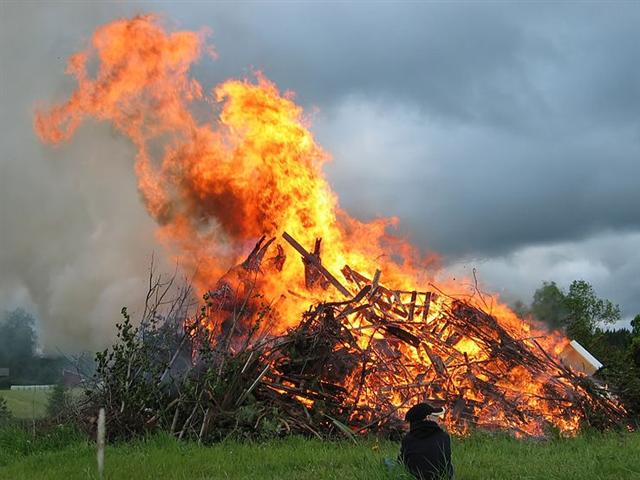
|















